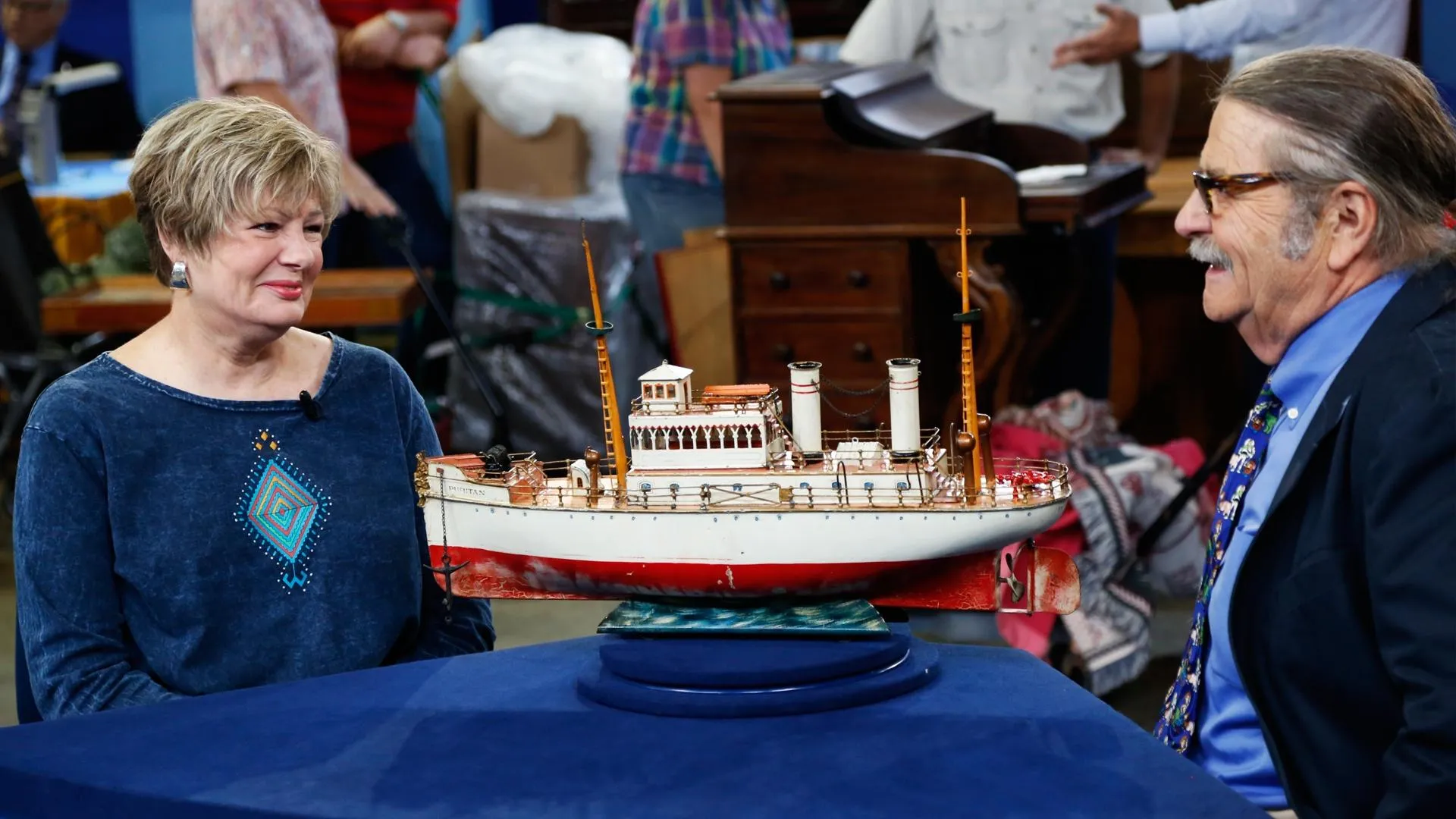GUEST: It was my great-grandfather's, who lived in Virginia, and he was in the Civil War. And after the war, he was married, had six children. The next person in the family to own it was his daughter Laura, which is my great-aunt. And there came a time in her life when she needed money just for food and for rent, and my sister loved that music box-- this was the '30s-- she bought it from her and made weekly payments until it was paid for. And then I inherited it from my sister in 1993.
APPRAISER: It's a Regina music box. Regina was the premier maker of American music boxes. The Regina music box company was the most successful music box maker in the country, and they produced over 100,000 music boxes between roughly 1892 to 1920. This particular cabinet they advertised as a Rookwood style cabinet.
GUEST: Now, what is Rookwood?
APPRAISER: Well, they say it's to mimic the Rookwood pottery. I don't see a lot of similarities to it, but that was the promotion that they used.
GUEST: I see. I see, yeah.
APPRAISER: And this is sort of at the tail end of the company, so this becomes popular around 1904 to 1906. And we can see this Rookwood style with this floral decorated top, these hand-painted vignettes, floral, and then I love this vertical courting scene, and then of course we have landscape panels on the side.
GUEST: I think it's a beautiful box.
APPRAISER: Mahogany is your primary wood.
GUEST: Okay, I didn't know that.
APPRAISER: And then when we open it up, we can see that it's got this wonderful pullout shelf to house all of your discs. It plays a 15 1/2 inch disc. And that is where they made a lot of their money too, by selling the discs afterwards. And we take it off, we can look at the mechanism here and you can see that it contains the name plate that's always issued by Regina, which contains a serial number. They still have records so you can determine when it was made and where it was shipped in most cases. The first two digits give us the model number, so this is a model number 67. Then of course it gives us the patent dates, and in this case we've got a double comb player.
GUEST: And then it has a harp attachment also.
APPRAISER: Got a lot of bells and whistles. It's a complicated movement, it's an elaborate case, but what makes it extra special is its pristine. Pristine condition.
GUEST: It is, isn't that amazing? It's been moved I don't know how many times and it still looks great.
APPRAISER: So while there's a lot of music boxes, knowing that they made 100,000 of them, there's very few of this style. Do you have any idea of its value?
GUEST: I would say not more than $10,000.
APPRAISER: Pretty close. If I were to estimate it, I'd estimate it at $10,000 to $15,000 for auction.
GUEST: Uh-huh.
APPRAISER: And I think it might do a little bit more than that.
GUEST: Yeah, I thought $10,000 to $12,000 is kind of what I thought.
APPRAISER: Shall we hear it?
GUEST: Yes, I'd love to. (music playing)











